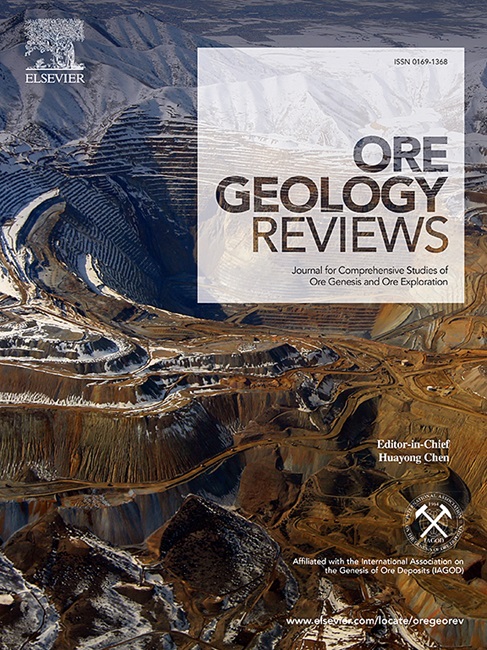Critical raw material potential of porphyry copper-gold deposits in the Golden Triangle, northwest British Columbia, Canada
IF 3.2
2区 地球科学
Q1 GEOLOGY
引用次数: 0
Abstract
Porphyry deposits are major sources of copper, gold, molybdenum, and silver globally. However, the potential for critical raw materials (CRM) to be mined as by-products (e.g., antimony, bismuth, platinum group elements, and tellurium) at these deposits is poorly understood. Herein we present results from a lithogeochemical survey (n = 331), detailed mineralogy, and trace element mapping to characterize the concentrations of CRM and their deportment within the Golden Triangle, northwest British Columbia, Canada. We demonstrate that the host rocks to porphyry copper-gold (i.e., Galore Creek, Copper Canyon, KSM, Dok, Yeti, and Burgundy) and epithermal gold-silver (i.e., Brucejack) deposits were derived from oxidized and water-rich parental melts that suppressed sulphide crystallization, resulting in the pre-enrichment of CRM relative to other arc rocks globally. The structural juxtaposition, local thickening, and preservation of these prospective source rocks is likely one of the factors contributing to the mineral district’s exceptional gold and CRM endowment. Multiple analytical methods (e.g., aqua-regia, four-acid, fusion) for the same samples further demonstrate that the highest Bi (39 ppm), Pd (460 ppb), Sb (375 ppm), and Te (15 ppm) concentrations are associated with sulphide and/or other non-resistate minerals within the most hydrothermally altered samples. Detailed mineralogy and trace element mapping by laser ablation-inductively coupled plasma-mass spectrometry (LA-ICP-MS) reveals that CRM within the Golden Triangle are hosted by at least 58 different minerals. We apply these results to estimate the contained CRM at the Galore Creek and KSM deposits and to discuss their potential to be recovered as by-products. Lithogeochemical results are also applied to predict the mineral potential of different igneous suites within the Golden Triangle based on their CRM concentrations.

加拿大不列颠哥伦比亚省西北部金三角斑岩铜金矿床的关键原材料潜力
本文章由计算机程序翻译,如有差异,请以英文原文为准。
求助全文
约1分钟内获得全文
求助全文
来源期刊

Ore Geology Reviews
地学-地质学
CiteScore
6.50
自引率
27.30%
发文量
546
审稿时长
22.9 weeks
期刊介绍:
Ore Geology Reviews aims to familiarize all earth scientists with recent advances in a number of interconnected disciplines related to the study of, and search for, ore deposits. The reviews range from brief to longer contributions, but the journal preferentially publishes manuscripts that fill the niche between the commonly shorter journal articles and the comprehensive book coverages, and thus has a special appeal to many authors and readers.
 求助内容:
求助内容: 应助结果提醒方式:
应助结果提醒方式:


